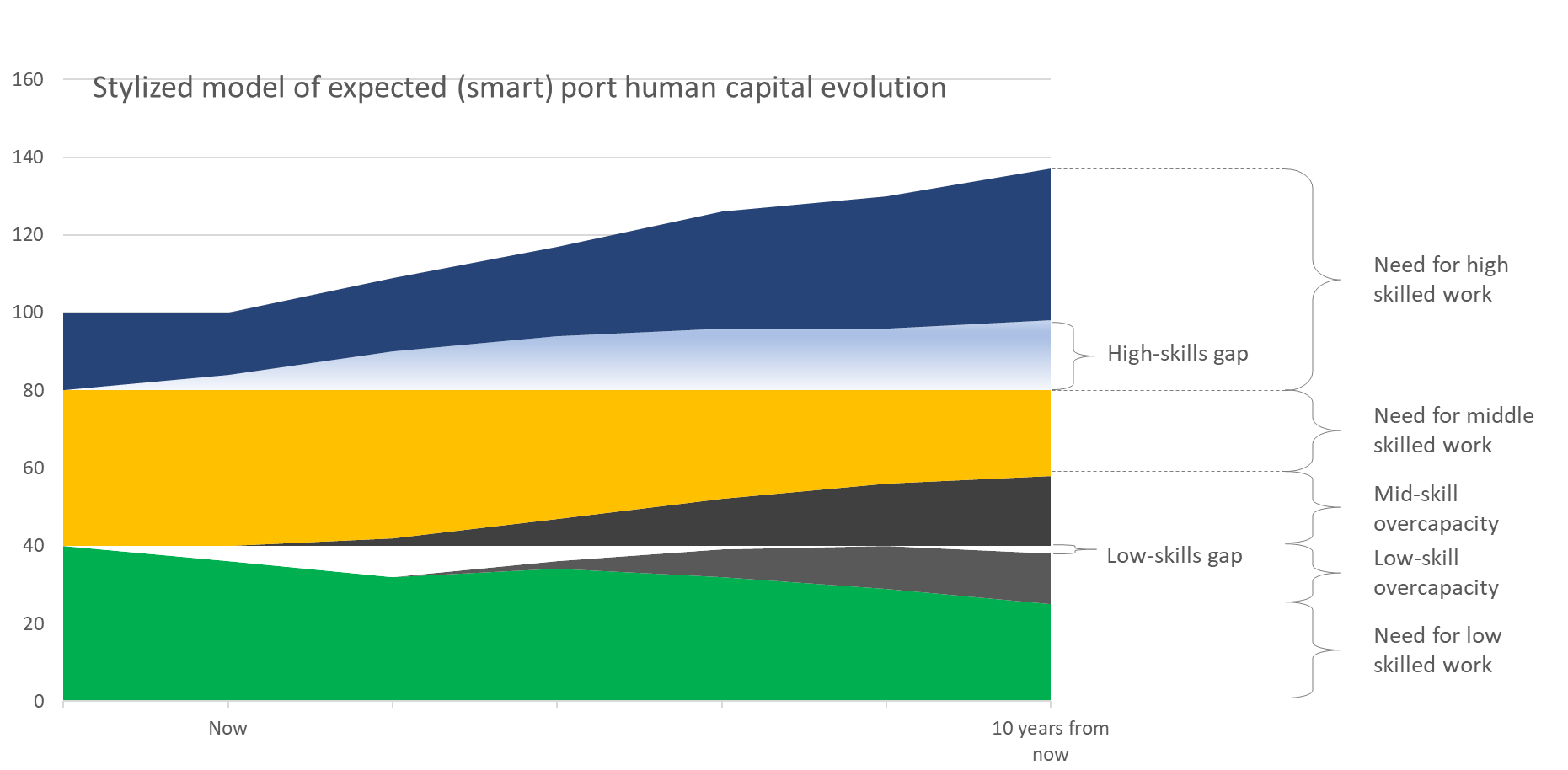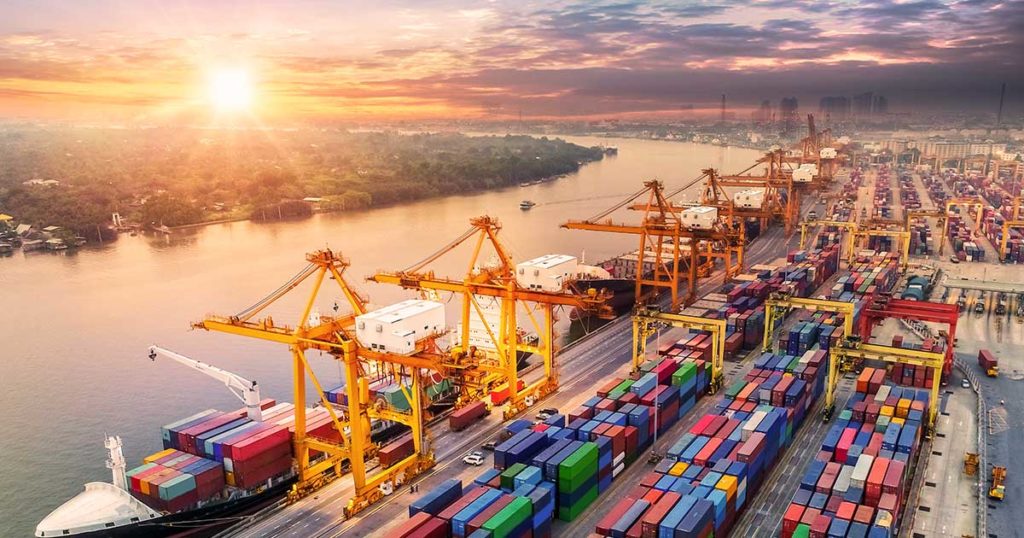As in many industries, in port logistics Covid 19 provides a burning platform that reinforces digital trends that were already smoldering. In an industry that is not particularly known for its openness to innovation and change, it’s even a welcome deus ex machina. Ports can no longer stay behind, now that supply chains all over the world are undergoing the stress test of the century. With calls from the shipping industry and port stakeholders, the digital transformation of ports is being turbocharged.
There is one key bottleneck, however. Ports are struggling to attract sufficient technologically proficient talent [1, 2]. This is especially the case for highly educated technology workers who are already in high demand in other industries. The need to compete in a business that will be more sophisticated in terms of technology, distribution network strategies and supply chain convergence, implies that higher-skilled workers will increasingly drive success in the smart port industry [3]. Yet, maritime logistics is rarely the first career choice of high-skilled and digital talent. The industry is either unknown to them or struggles with an image problem. So there is work to be done here, but this is not new.
Robotics
It gets more complicated, though, when you look at the middle- and low-skilled port workers. Some of the jobs that are expected to go first due to self-driving trucks or AGVs, such as truck or carrier drivers or stevedores, are the very same jobs that the port industry has a very hard time filling in right now [4]. This acute shortage is even expected to grow due to the baby boomer retirement wave. So, in the short term the industry would need to invest in attracting and training people for jobs that will be irrelevant in five to ten years from now. On the low end, the current capacity deficit will thus likely be rather short-term, and the efforts made to solve it, will create overcapacity in the longer term.
Digitization
When we take a closer look at the jobs in the middle, there does not seem to be a capacity problem right away. However, studies on the labor market impact of digitization indicate that these jobs are the most prone to automation [5]. The industry is thus bound to have an overcapacity of middle-skilled workers in the near future, which will increase as digitization continues.
Put all these elements together, and you get an increasing mismatch at all levels of the talent curve in maritime logistics, as shown in the chart above. On the high end of the human capital distribution, there is a skill shortage which will only become more outspoken as supply fails to catch up with the increasing demand. In the historically stable middle, automation will make increasingly larger job segments obsolete. In the low end, digitization will further polarize work into lousy and lovely jobs, so that only the lowest-skilled and least attractive jobs remain, while the short-term impulse will be to invest in the relatively more interesting, automatable ones (such as drivers).
As the need for a high-skilled technical workforce increases, so will the cost of not adequately responding. If the 2 Seas region wants to remain competitive in an ever competitive port industry, a radical overhaul of its human capital base will be necessary. However, since the expected trends create different problems in different layers and time horizons of the port logistics labor market, straightforward solutions will not do. Instead, a differentiated investment program of targeted measures toward specific skill groups will be needed to prepare for the port of the future. We thus already see the following recipes to address the smart port talent paradox:
- Re-skilling middle-skilled jobs: While digitization increasingly substitutes the more routine jobs in the middle related to e.g. the logistics document flow, trade brokerage, and routine financial, insurance, and operational analysis and dispatching, the capacity for more complex and technologically demanding jobs will grow ever scarcer. The only viable solution to combat these simultaneous pressures of job obsolescence and talent scarcity, is to upskill. Freight forwarding clerks may be able to take on more high-value generating tasks through enabling platforms like Dockflow, instead of handling all the administrative tasks by hand.
- Digitizing the low end: Investments in training for low-skilled jobs that are in demand right now, will have a low return in the long run. The best way to tackle short-term demands is to invest in automation here first. Solving the shortage of low-skilled workers through digital investments will require a different mindset to operations and, ideally, goes hand in hand with a redesign of current processes and business models. Changing trucking routes, so that their end point is no longer the port but an extended gateway, both reduces the need for truckers who lose most of their time on and around port premises, and improves the potential for automation on routine feeder routes.
- Winning the digitally minded hearts and minds: We need to be more aware of the pivotal impact of this group. The port logistics community can collectively invest in the recognition and attractiveness of this industry. The transformative journey toward a smart port will provide many high-impact fulfilling careers that need to be strongly promoted. This will require a more innovation-minded culture and a C-level commitment to digital operations, however. This is not a matter of just attracting technological talent. To make it stick, there needs to be a commitment to long-term capacity-building.
This blog is part of a series in which we explore the challenges for ports to become smart ports, as part of the SPEED project. SPEED stands for Smart Port Entrepreneurial Ecosystem Development and aims to facilitate the smart port innovation market by translating port challenges into achievable use cases and by attracting technology players from all industries to develop suitable solutions. We organize a wide range of activities, meeting the expectations of A-level start-ups to C-level port executives.
In future editions of this blog we will dive into other challenges for the smart ports ecosystems, such as the governance and legal requirements for sharing data across port actors, conditions for ecosystem innovation and a smart port maturity model.
Want to stay updated of our events and insights? Follow us on Linkedin
Wouter Van Bockhaven
Yassin Boullauazan


